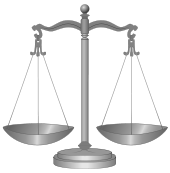- Eggshell skull
-
The eggshell skull rule (or thin skull rule or you take your victim as you find him rule of the common law) is a well established legal doctrine used in some tort law systems,[1] with a similar doctrine applicable to criminal law.
Contents
The law
This rule holds one liable for all consequences resulting from his or her tortious (usually negligent) activities leading to an injury to another person, even if the victim suffers an unusually high level of damage (e.g. due to a pre-existing vulnerability or medical condition). The term implies that if a person had a skull as delicate as that of the shell of an egg, and a tortfeasor who was unaware of the condition injured that person's head, causing the skull unexpectedly to break, the defendant would be held liable for all damages resulting from the wrongful contact, even if
- such damages were not reasonably foreseeable, or
- the tortfeasor did not intend to cause such a severe injury.
In criminal law, the general maxim is that the defendant must "take their victims as they find them", a quotation from the judgment of Lord Justice Lawton in R v. Blaue (1975), in which the defendant was held responsible for killing his victim, despite his contention that her refusal of a blood transfusion constituted novus actus interveniens.
The doctrine is applied in all areas of torts - intentional torts, negligence, and strict liability cases - as well as in criminal law. There is no requirement of physical contact with the victim - if a trespasser's wrongful presence on the victim's property so terrifies the victim that he has a fatal heart attack, the trespasser will be liable for the damages stemming from his original tort. The foundation for this rule is based primarily on policy grounds. The courts do not want the accused to rely on the victim's own vulnerability to avoid liability.
The thin skull rule is not to be confused with the related crumbling skull rule in which the plaintiff suffers from a detrimental position (from a prior injury, for instance) pre-existent to the occurrence of the present tort. In the "crumbling skull" rule, the prior condition is only to be considered with respect to distinguishing it from any new injury arising from the present tort - as a means of apportioning damages in such a way that the defendant would not be liable for placing the plaintiff in a better position than they were in prior to the present tort. [2]
Case illustrations
(UK) In the case of Smith v. Leech Brain & Co.,[3] an employee in a factory was splashed with molten metal. The metal burned him on his lip, which happened to be premalignant tissue. He died three years later from cancer triggered by the injury. The judge held that as long as the initial injury was foreseeable, the defendant was liable for all the harm.
(US) In 1891, the Wisconsin Supreme Court came to a similar result in Vosburg v. Putney.[4] In that case, an 11 year-old boy kicked a 14 year-old boy in the shin while at school. It turned out that the 14 year-old had a unknown "microbial" condition that was irritated by the kick. The kick resulted in the boy entirely losing the use of his leg. No one could have predicted the level of injury before the kicking. Nevertheless, the court found that since the kicking was unlawful, and as it occurred during school and not on the playground, the 11 year-old boy was liable for the injury.
(US) In Benn v. Thomas, the appellate court determined that the eggshell rule should have been applied to a case in which a man had a heart attack and died after being bruised in the chest during a rear-end car accident.
Exceptions
Intervening cause is typically an exception to the Eggshell Skull rule. If an injury is not immediate, but a separate situation agitates the injury, the tortfeasor is not liable.
For example, if A assaults B, and B is hauled away on a stretcher, where he is struck by lightning, even though A's actions had caused B to be at the place and time of the bolt of lightning, the Eggshell Skull rule does not apply.
References
- ^ 708 F.2d 1217, citing Prosser, Handbook of the Law of Torts 261 (4th ed. 1971)
- ^ Athey v. Leonati, [1996] 3 S.C.R. 458, (1996), 140 D.L.R. (4th) 235 (S.C.C.), online at: http://www.canlii.org/en/ca/scc/doc/1996/1996canlii183/1996canlii183.html
- ^ [1962] 2 QB 405]].
- ^ 80 Wis. 523, 50 N.W. 403 (Wis., 1891) (reversed and remanded for a new trial on other grounds).
Categories:- Common law
- Tort law
- Legal doctrines and principles
Wikimedia Foundation. 2010.

